Whenever people search for new online courses to take, they have many decisions to make. Since that can get overwhelming quickly, learners often look at the description, read a review or two, and click the purchase button, with great hopes that they’ll finally learn that skill or upgrade what they already know, hoping for the best.
One of my favorite sitcoms of all time, Miranda, offers a perfect example of this situation. In a Christmas episode, the titular character has decided to host dinner on her own because “It can’t be that hard.” A few moments later, we see her crying, “It’s REALLY hard” as her whole kitchen is a mess, she has confused tbsp (tablespoon) with tsp (teaspoon), and the burned crepes were hilariously glued to the ceiling. Plus, she delivered one of her best quotes yet:
“At one point, I was told to skiffle carrots. Skiffle?! Am I to play them a percussive instrument and dance for them? My carrots?”
Sure, this is an exaggerated and funny example of attempting to do something on a “How hard can it be?” mentality. However, to apply this example in an online course setting, we can see how throwing learners into a learning situation without adequate preparation has negative consequences (even if they do this to themselves).
In other words, when learners are underprepared for any course, even a self-paced online one, it’ll likely end up in frustration.
Why does learner frustration happen?
The problem is usually twofold. On the one hand, you’re the expert, so you want to your course buyers them to do everything in a relatively short amount of time. This approach can backfire since you have probably studied for years and had a lot of time to hone your skills. Trying to distill all of that into a single course or a module is nearly impossible, especially if you assume that they already know some things. This leads to cognitive overload, as they’re trying to take it all in.
On the other hand, they’re the novices who don’t know what they don’t know and have too high expectations from a single online course. Overconfidence can make them pick ambitious goals without the previous knowledge to back them up.
And there we have it: wrong assumptions on your part plus insufficient previous knowledge on theirs makes it hard to deliver a successful course.
The good news is that this doesn’t have to be your case, as experienced instructional designers have already figured it out. It’s called learning sequencing.
Read more: 5 Tips for avoiding cognitive overload in your e-learning modules
What is learning sequencing?
Learners take online courses to solve a pain point, and so do by making a journey — from point A (their starting point) to point B (where your course wants to take them). At the same time, there are all kinds of steps between A and B that can fit in a learning sequence: what, how, and in which order you deliver learning content and activities.
“Sequencing is the efficient ordering of content in such a way as to help the learner achieve the objectives.
(Source)
In fact, the order in which you present something is just as important as what you present. Delivering learning in any order that you think is best won’t benefit learners. Think of the whole process as a river with many stepping stones: learners can’t cross the river if they miss one step.
However, you can’t go wrong if each step is carefully planned and anticipates what learners know and need to learn next.
How to plan your module sequence
According to the backward design model, instructors need to start with the end result. Only then can they figure out how to assess and teach the content. This means that you can plan your course (or courses) by taking this final goal and working backward to create a learning sequence that makes sense for anyone who enrolls.
Here are some tips to help you plan your learning sequences:
-
Define the end goal
Big lofty goals look great when you name your course — I’ll give you that. Titles such as “The complete guide to...” or “Ultimate mastery...” are sure to draw attention. However, that could be stretching it a bit, depending on what you teach and who you teach.
Let’s say that we want to teach people like Miranda how to host the best Christmas party. Since it’s usually a full course dinner, complete with decoration ideas and activities, the end goal is more complex than it seems. It’s actually about learning how to cook, entertain and organize an event.
Now, of course, take this example and apply it to coding, learning a new language or even woodworking, which are complex skills that take a lot of time and effort to master. Centering courses around smaller and achievable objectives is starting to seem like a great idea.
-
Do a task analysis
Task analysis means breaking down what learners need to know to perform one task. For example, to host a Christmas dinner, they need to plan the menu, starters, main courses and dessert. They also need fun activities and learn how to decorate.
For each task — let’s pick cooking main courses, you’ve managed to retrace their steps and it turns out that they have to:
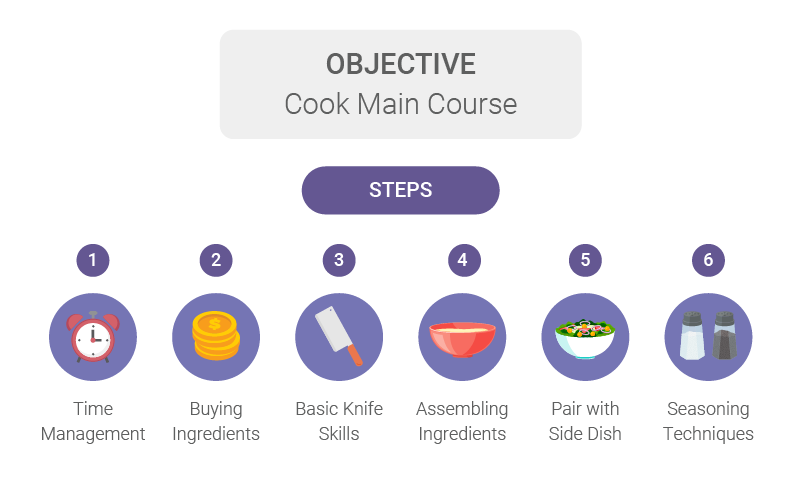
As you can see, there’s also “knife skills” on the list, as logically, they can’t start assembling ingredients if they have no idea how to cut different items.
Task analysis is understanding how the learner goes from A to B and the steps involved. If you start your module with an example about roasting vegetables unaware that learners don’t even know how to cut them properly, you haven’t anticipated their needs. Thankfully, task analysis helps you avoid this situation.
-
Know your learners’ starting point
Now that you have an idea of what a skill requires, you need to understand where your learners are at the beginning of the course. You might be tempted to draw from your own experience and just add things as you see fit. However, you’ve likely learned a skill from face-to-face classes and maybe a lot of trial and error. Reproducing the exact sequence would probably be impossible, and your learners expect a smoother experience.
Instead, aim to find out:
- Who are they?
- What do they already know?
- What is their current skill level?
The last part is optional, but many instructors find it easier to define their own rubric, complete with skill levels. Consequently, you’ll know exactly what a beginner does, what an intermediate learner knows, etc.
To make it easier, think:
- What is their A position?
- Do they have the prerequisites for the course?
- If not, how can you add the prerequisites to the course?
Some of this information can come from interviews you’ve done to validate your course ideas. Otherwise, you can also create a quiz on your main website so you’ll get an idea of what they already know.
Read more: Top 9 websites to validate your online course ideas
Plus, they don’t even necessarily have to be beginners. Taking the previous example, if our beloved Miranda had known how to make basic crepes that aren’t burnt and stuck to the ceiling, a module designed for her would be able to skip that part and just explain how to make the best fillings.
-
Plan your sequence
Having a big end goal is great, but once you start planning the course outline based on your task analysis, you’ll notice that it’s too much information to cram into one course.
So, you’ll need to break that down into learning sequences working from your end goal and going backward, breaking it down into smaller objectives.
In the process, you might notice that it’s not enough, so you’ll have to either:
- create different courses that learners must take to reach that end goal. This is easy to do, as long as you plan it well, so all the courses complement each other;
- build difficulty levels within your course. You’ll be teaching different levels of the same skill to accommodate different learner needs.
To give you an example, let’s say that you’ll create multiple courses that teach related skills. Your master plan can look something like this: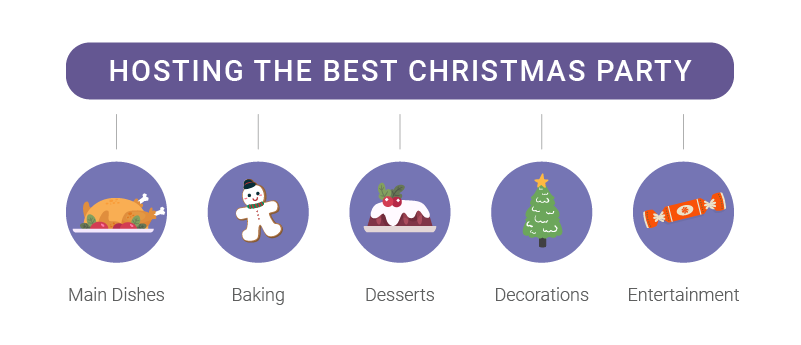
Notice that each skill has its own course, which will need its own learning objectives.
-
Learning sequencing within courses
If you decide that multiple courses are needed to reach a big end goal, don’t forget that the courses themselves need to follow the same pattern: previous knowledge that leads to new knowledge.
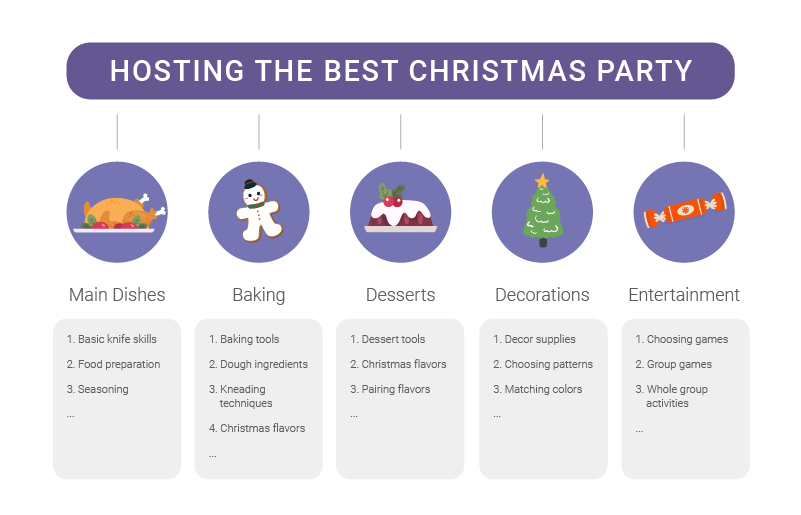
The best part about this is that you can also repeat some content here and there. For example, the Baking and Desserts courses have overlapping objectives, such as knowing which ingredients work best for Christmas. This means that it’s OK to include the same module about flavors in both courses or slightly change the content to suit that specific course.
-
Chunking the content
If you start with the content, it’s really hard to figure out what to include in your course and what to leave out. You’ll most likely end up with a bloated course with unnecessary information or, even worse, missing pieces.
As you’ve probably guessed by now, you never start with content creation or curation in backward design. This part comes after you know the end goal, you’ve done the task analysis and the learning sequence in which it will all be taught.
The next step is creating a course outline with clear objectives for each module, which actually makes it so much easier to design the content. This enables you to deliver it in chunks, with very specific steps and focusing on a particular learning goal. As each module builds on the previous one, you’ll know that learners will be able to complete the tasks successfully.
For example, here you can see a content page that will have images and descriptions of baking tools and a short quiz to make sure that they’ve understood what they need to have in their kitchen before they can go to the next level:
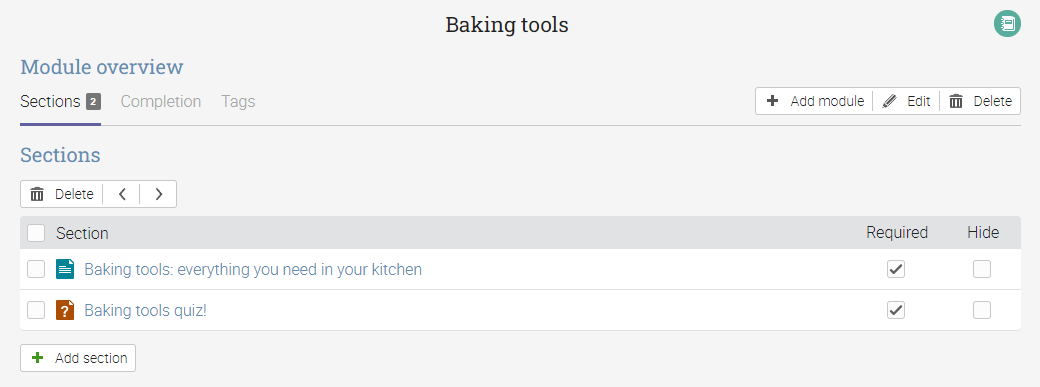
-
Plan content release
Having everything available at once may seem like a great idea. On the other hand, when it comes to learning sequencing, skipping steps can be a big no-no since learners will miss important information along the way.
To ensure that learners focus on one thing at a time, you have a few options:
- Drip content: new modules are unlocked every day, every two days or weekly, depending on what you prefer and the difficulty of each module;
- Unlock modules: new modules are unlocked after learners complete previous ones.
For example, to automatically unlock module two, learners have to go through module one, take a quiz, and do any other actions required for completion. This ensures that they’ve understood the previous content and are ready to go to the next step.
Read more: 10 Course automation tricks you need to save time
-
Bundle courses
If you’re focusing on a bigger end goal and decided to create multiple courses, offering a bundle at a good price is a great option.
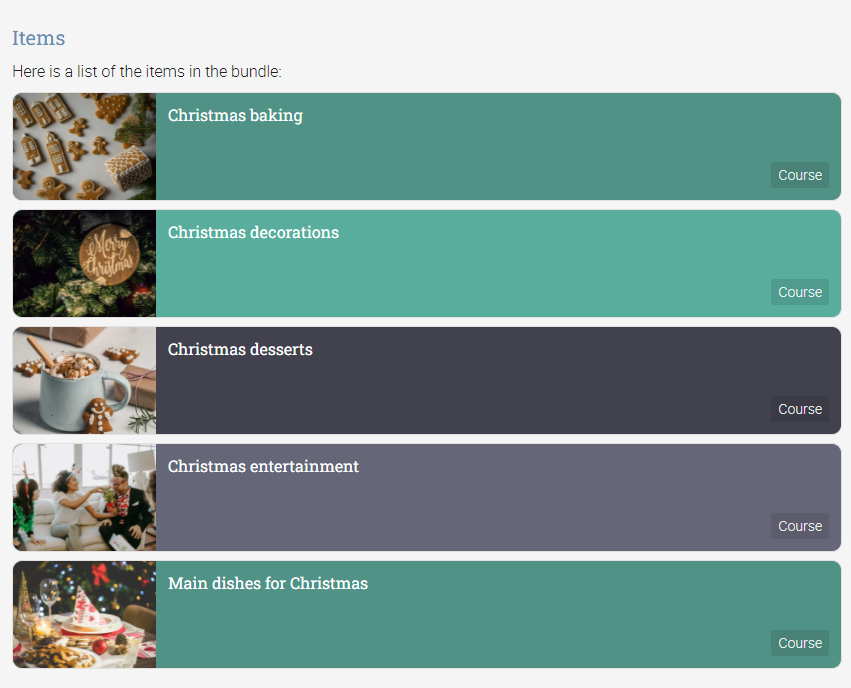
A bundle contains multiple courses but you can surprise your learners with additional items. For instance, our Christmas Host Bundle contains all the relevant courses, but could also have an ebook called “100 Topics of Conversation that don’t involve Politics,” which is something that doesn’t necessarily fit into the other categories, but will help your learners save Christmas dinner if needed.
The added benefit is that the bundle is seen as more valuable together. You can also sell the courses separately if some of your learners are just interested in learning one skill.
In terms of selling courses, planning your entire platform around a big goal ensures that you’ll have enough content ideas and that the courses will follow a coherent structure that learners will love and will want to come back to for more.
Read more: How to set a price for your online course
Conclusion
Learning sequencing is one of the most important methods in instructional design. Course entrepreneurs who understand how to plan learning objectives and in which order to teach the content are already light years ahead of their competitors.
At the same time, it’s a surefire way to know that learners are on track to achieving their goals, even if you’re not physically there to guide them through every step.







